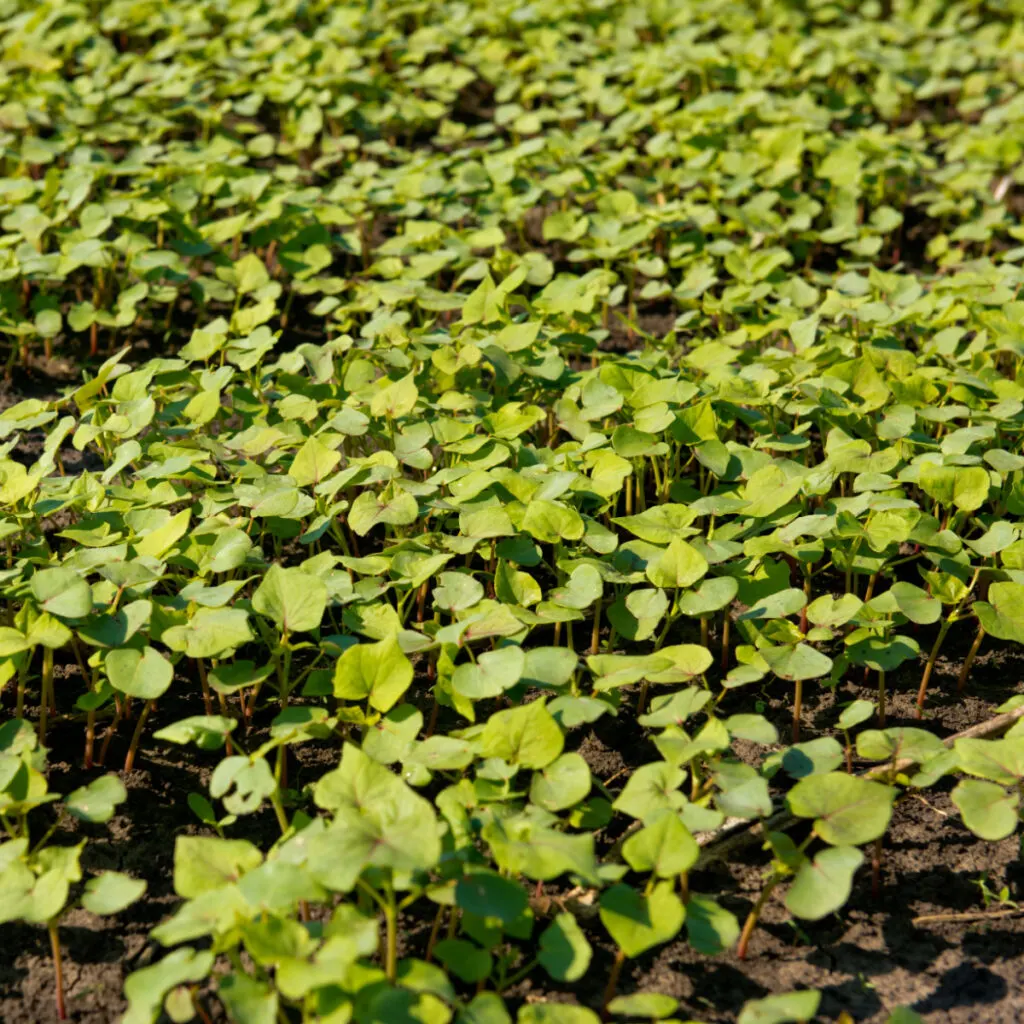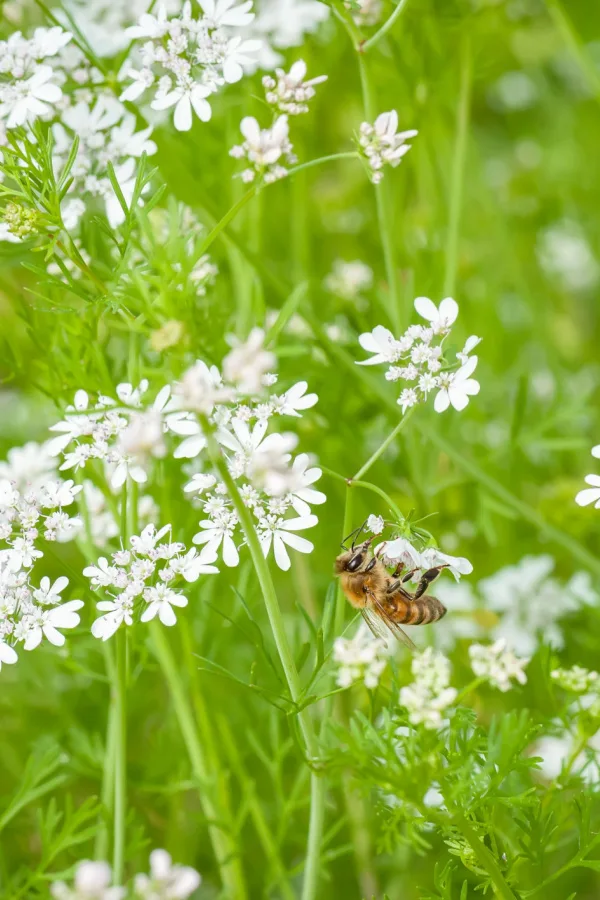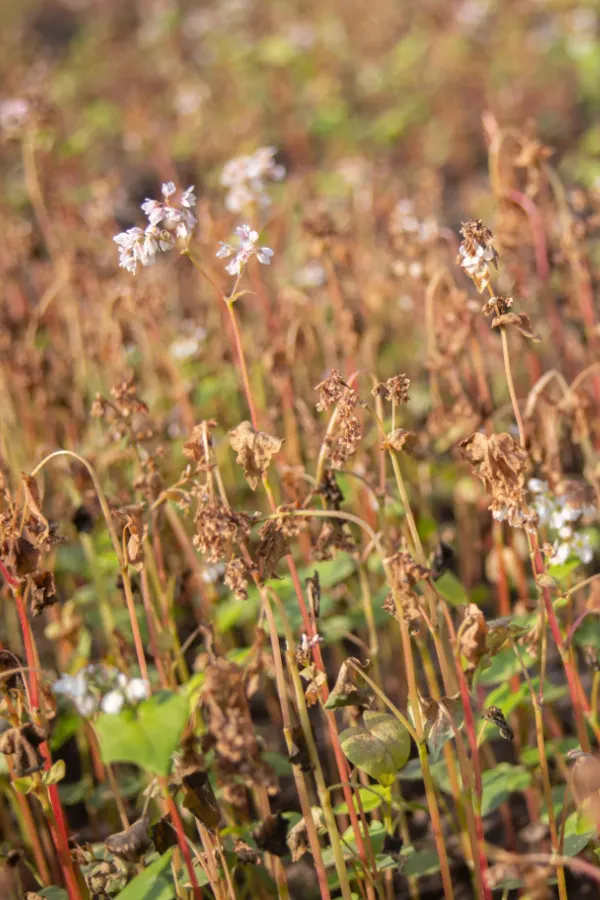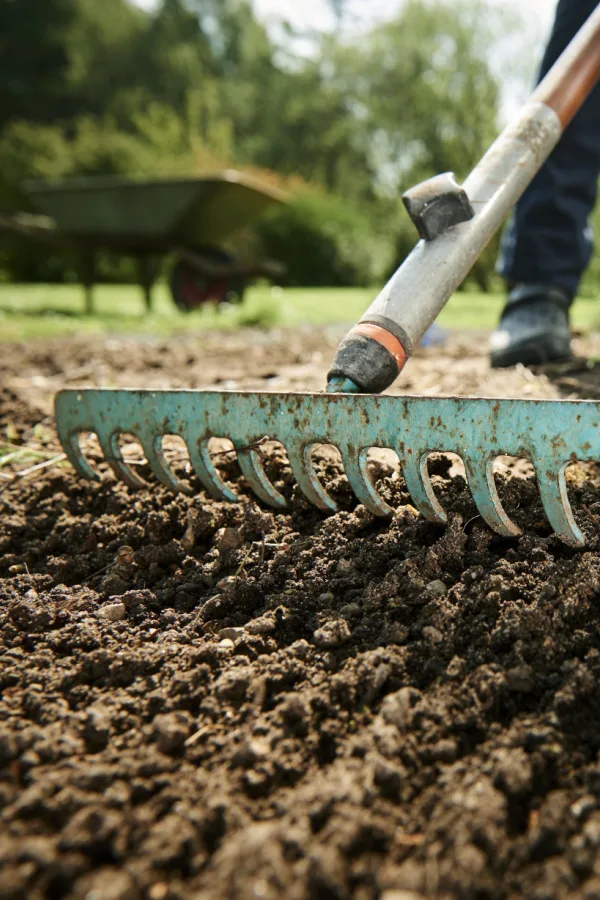When it comes to low-maintenance cover crops, you can’t go wrong when you plant and grow buckwheat. In as little as a week, buckwheat can start benefiting your garden – all with no tilling required!
While some might consider buckwheat to be an ancient grain, this cover crop is perfect for today’s modern no-till gardening methods. It can be planted almost any time after you pull your summer crops and will quickly begin protecting the soil.
Buckwheat does an excellent job at keeping out weeds. In addition, since it flowers for such a long period, it can also draw in late-season beneficial insects and pollinators. This can sometimes be an issue when your warm-weather crops and flowers stop blooming.

But one of the best features of growing buckwheat as a cover crop is how easy it is to plant, grow, and terminate. You simply broadcast the seed onto lightly raked soil, water it well, and watch as it takes off. When the cold weather hits, buckwheat will die back naturally – no tilling involved!
As long as you keep this fast-growing grain from going to seed, buckwheat will benefit the soil, pollinators, and your future garden alike – with little to no effort required by you!
Benefits of Using Buckwheat As A Cover Crop
As with most cover crops, buckwheat is excellent at keeping weeds from germinating on bare soil. They are considered to be “green mulch” crops, which means they naturally help to protect soils. (Affiliate Product Link: Buckwheat Cover Crop Seeds)
As soon as you pull your summer crop, the soil is left bare and empty. This bare soil is an open invitation for weed seeds to settle in and take root. Even if they don’t germinate in the fall, the weed seeds will be sitting there waiting for warmer weather to arrive.
Because buckwheat germinates so quickly, the weed seeds are left with little time to find the bare ground. What’s more, buckwheat fills in thick and dense, creating a blanket of protection so the weed seeds can’t get to the soil.

Another advantage of using buckwheat as a cover crop is that it flowers for up to one month. While you don’t want to let the crop go to seed, you can still allow the flowers to bloom for a week or two before cutting or before it’s hit by the first frost. This helps to draw in pollinators that might otherwise pass by during the fall months.
Improvements To The Soil – How To Plant Buckwheat
As it grows, buckwheat also helps to improve the soil’s nutrients. It does this by making phosphorous more readily available within the soil.
Phosphorus (P) is one of the three nutrients that plants require in order to grow and thrive. So by growing buckwheat, you are helping to naturally raise the P values while also reducing the amount of synthetic fertilizers needed the following year.
Buckwheat also helps to absorb the other two main nutrients, Nitrogen (N) and Potassium (K). These nutrients might otherwise be lost to bare soil and runoff.
In addition, when buckwheat dies or is cut down, the nutrient-rich organic matter decomposes and is added to the surrounding soil. This helps to improve the soil structure as well as helps to loosen dense, clay-like soil.
No Tilling Required
The last big advantage of buckwheat is that it is easy to terminate. In order to prevent cover crops from going to seed and becoming weeds the following spring, you need to either cut it down, till it in, or kill it off in other ways.

Tilling works great, but it comes with a ton of issues and problems. Because of all the negatives tilling brings about, many gardeners opt for no-till or more conservative gardening methods. And buckwheat fits in perfectly with that goal! (See “4 Simple Secrets To Keep Weeds Out Of A Garden”)
Buckwheat is not a cold hardy crop. That means that it will die back naturally after the first frost in colder locations. This results in no tilling or no extra work needed by the grower.
However, if you don’t live in colder growing locations, simply cut the buckwheat down close to the ground before it goes to seed to reap all the same benefits.
How To Plant & Grow Buckwheat
When To Plant Buckwheat
You can actually plant buckwheat at any time during the growing season. However, the no-till method works best when planted in the late summer to early fall while the soil is still nice and warm. A soil temperature of 70º Fahrenheit will allow the seeds to germinate the quickest.
This cover crop reaches full maturity in about 10 weeks, growing around 2 feet tall. Since you don’t want the plants to go to seed, aim for sowing around 6 to 8 weeks before the first fall frost. This gives the plants enough time to germinate and grow without going to seed before the first frost.

Planting Buckwheat
To help prepare the soil, lightly rake the top half inch or so. This gives buckwheat seeds a good place to settle in and take hold. There is no need to add compost or amend the soil as long as it is well-draining.
While you can strategically place and sow seeds, broadcasting with a seed spreader or your hands works much easier when you use buckwheat as a cover crop. Ensure an even scattering of seeds for best coverage.
After sowing, lightly rake the seeds into the soil, but do not allow the seeds to get deeper than one inch. If they are planted too deeply, they will struggle to germinate. Seeds will germinate in around 5 to 12 days.
Long-Term Maintenance
You need to water the seeds regularly in order to get buckwheat to germinate. However, buckwheat does not require watering often as it grows. If you start to see buckwheat plants droop or wilt, then give the plants a good soaking of water.
Buckwheat will flower in about 35-45 days after sowing. If desired, allow the plants to flower for a week or two. However, if you don’t expect a frost in the upcoming forecast, cut the buckwheat down before it goes to seed.

Once the first frost arrives, the buckwheat will die off naturally and wilt to the ground. By springtime, you will be able to plant right through the decomposing plant matter without worry of unwanted buckwheat weed seeds sprouting.
When you plant this fast-growing, broadleaf green manure cover crop, you are letting the buckwheat do the work of improving and protecting your soil so you don’t have to! Once spring rolls around, and it’s time to recharge your soil, be sure to check out How To Use A Green Manure Crop To Revive Your Garden’s Soil This Spring!
Follow Our Facebook Page For Great Gardening Tips And Advice! This Is My Garden Facebook Page
This Is My Garden is a garden website created by gardeners, for gardeners. Jim and Mary Competti have been writing gardening, DIY and recipe articles and books and speaking for over 15 years from their 46 acre Ohio farm. They publish three articles every week, 52 weeks a year. Sign up today to follow via email, or follow along!
